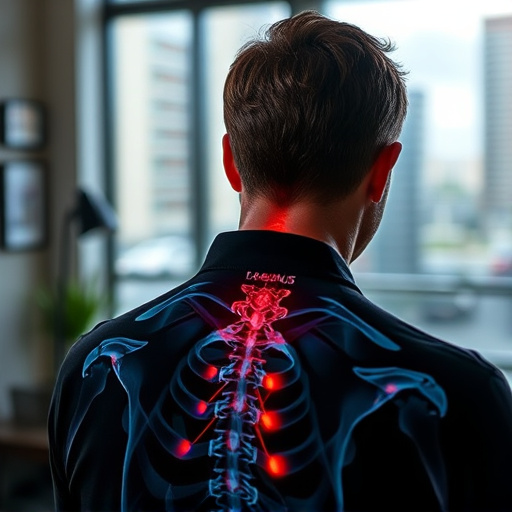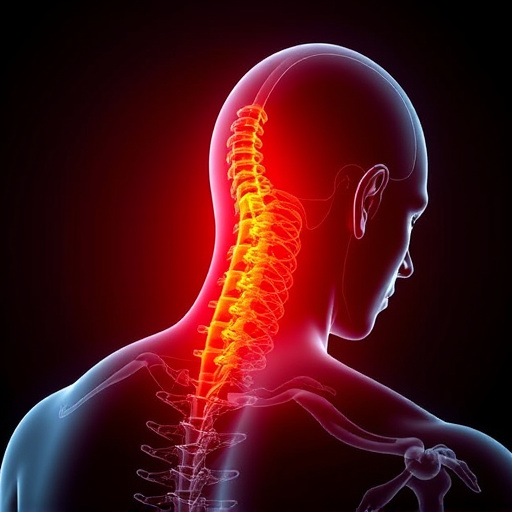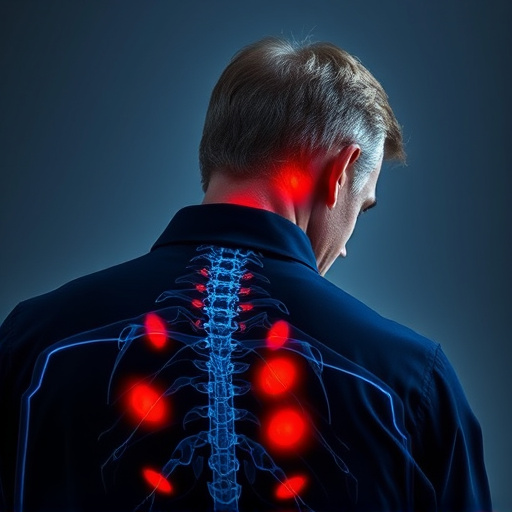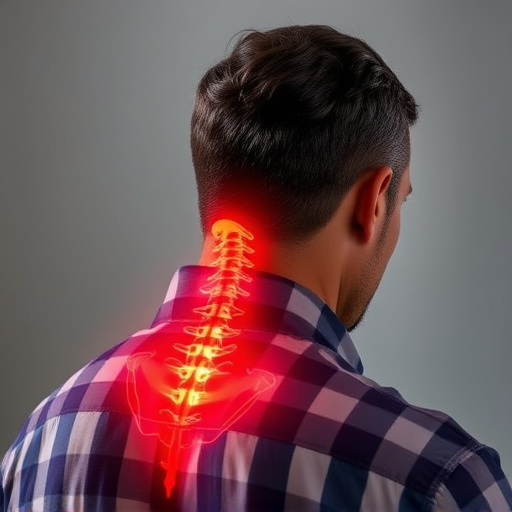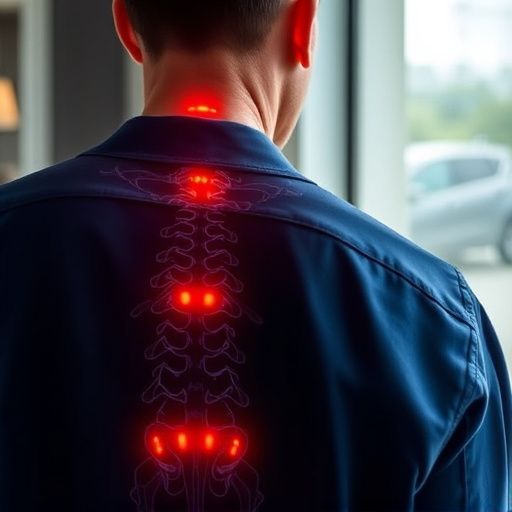Workers compensation injury care addresses cervical pain and stiffness caused by work-related injuries, offering tailored treatments like physical therapy, medication, and alternative therapies. By identifying risk factors such as sedentary jobs or age-related spinal wear, this system provides proactive support to manage and prevent further discomfort. Effective relief is achieved through a combination of non-invasive treatments, ergonomic adjustments, and preventative measures, enabling individuals to return to work safely and maintain long-term neck health.
“Experience relief from painful, stiff cervical areas with our comprehensive guide. Explore various aspects of managing this condition, from understanding its underlying causes and risk factors to effective treatment options. We delve into worker’s compensation considerations for cervical injuries, non-invasive therapies, physical therapy benefits, medication choices, alternative remedies, and preventative strategies for long-term management. Find expert advice tailored to your needs.”
- Understanding Cervical Pain and Stiffness: Causes and Risk Factors
- Workers Compensation and Care for Cervical Injuries
- Non-Invasive Treatment Options for Relief
- Role of Physical Therapy in Managing Cervical Discomfort
- Medication and Alternative Therapies for Pain Alleviation
- Preventative Measures and Long-Term Management Strategies
Understanding Cervical Pain and Stiffness: Causes and Risk Factors

Cervical pain and stiffness can significantly impact daily life, making simple movements uncomfortable or even painful. Understanding the root causes is essential for effective relief and prevention strategies. This condition often arises from a variety of factors, including muscular strain, poor posture, or underlying medical issues. Workers compensation injury care recognizes these causes and offers tailored treatments to address them.
Risk factors for cervical pain include occupations that require prolonged periods in one position, such as desk jobs or manual labor. Additionally, age-related wear and tear on the spine, known as degenerative disc disease, can contribute to stiffness and pain. Workers with pre-existing conditions like herniated discs or arthritis are also more susceptible. Identifying these risk factors is crucial for proactive care, ensuring workers compensation injury management provides appropriate support and guidance.
Workers Compensation and Care for Cervical Injuries

Many workplace injuries, especially those involving repetitive motions or strenuous activities, can lead to cervical issues like pain and stiffness in the neck. In such cases, workers compensation plays a crucial role in ensuring employees receive adequate care and support for their recovery. This system provides financial benefits and medical coverage for workers who sustain injuries on the job, including those affecting the cervical region.
Appropriate care for cervical injuries under workers compensation typically involves specialized treatments like physical therapy, medication, and sometimes surgical intervention. The goal is to alleviate pain, restore mobility, and prevent long-term complications. Employers are required to facilitate this care by covering related expenses, ensuring employees have access to qualified healthcare professionals, and providing accommodations that support a safe return to work when recovery allows.
Non-Invasive Treatment Options for Relief

Many individuals seeking relief from cervical pain and stiffness often turn to non-invasive treatment options, especially when dealing with a workers’ compensation injury. These treatments are designed to provide effective care without the need for surgery or invasive procedures, making them appealing choices for those looking to avoid potential risks and recovery times. One popular approach is physical therapy, which focuses on gentle exercises and manual manipulations to improve mobility and reduce pain. This method can be particularly beneficial for workers’ compensation cases, as it helps individuals regain strength and flexibility, enabling a safe return to work.
Additionally, heat and cold therapy, ultrasound, and electrical stimulation are non-invasive techniques that can offer significant relief. Heat therapy is often used to relax muscles and increase blood flow, while cold therapy reduces inflammation and numbs the area, providing temporary pain relief. These treatments, along with others like massage and specialized stretching exercises, are accessible and safe choices for managing cervical discomfort resulting from work-related injuries, ensuring individuals can receive targeted care tailored to their specific needs.
Role of Physical Therapy in Managing Cervical Discomfort

Physical therapy plays a pivotal role in managing and alleviating cervical discomfort, especially following a worker’s compensation injury. It offers a comprehensive approach to pain relief and mobility improvement through tailored exercises and manual techniques. Therapists assess individual needs, designing specific treatment plans targeting muscle imbalances, joint restrictions, and scar tissue formation often associated with work-related injuries.
The benefits extend beyond immediate symptom relief. Physical therapy enhances workers’ compensation patients’ functional abilities, enabling a smoother transition back to the workplace. It empowers individuals with self-care strategies, including ergonomic recommendations and specific exercises, to prevent future episodes of cervical stiffness and pain.
Medication and Alternative Therapies for Pain Alleviation

Many individuals suffering from pain and stiffness in the cervical area, often related to work-related injuries covered under Workers Compensation, find relief through a combination of medication and alternative therapies. Over-the-counter pain relievers like acetaminophen or nonsteroidal anti-inflammatory drugs (NSAIDs) such as ibuprofen can help manage mild to moderate discomfort. For more severe cases, prescription medications may be required to reduce inflammation and numb the area.
Complementing pharmaceutical approaches, alternative therapies offer a holistic way to alleviate pain and improve mobility. Chiropractic adjustments, physical therapy, and heat or ice treatments are popular choices. These methods aim to correct spinal alignment, strengthen supporting muscles, and reduce muscle tension, providing long-term relief for those recovering from work-related cervical injuries.
Preventative Measures and Long-Term Management Strategies

Preventative measures play a crucial role in managing and avoiding pain and stiffness in the cervical area, especially for individuals dealing with work-related injuries covered under workers’ compensation care. Regular stretching exercises tailored to strengthen neck muscles can significantly reduce the risk of strain and injury. Maintaining proper posture while sitting or standing is essential; ergonomic adjustments at the workplace can help align the spine and alleviate pressure on the neck.
Long-term management strategies involve a combination of physical therapy, including specialized techniques like heat/cold therapy, massage, and gentle exercises. Applying these methods consistently can improve mobility, reduce inflammation, and provide lasting relief. Additionally, adopting a holistic approach by incorporating stress management techniques, adequate sleep, and a balanced diet can positively impact overall neck health, fostering a more robust and flexible cervical region.
